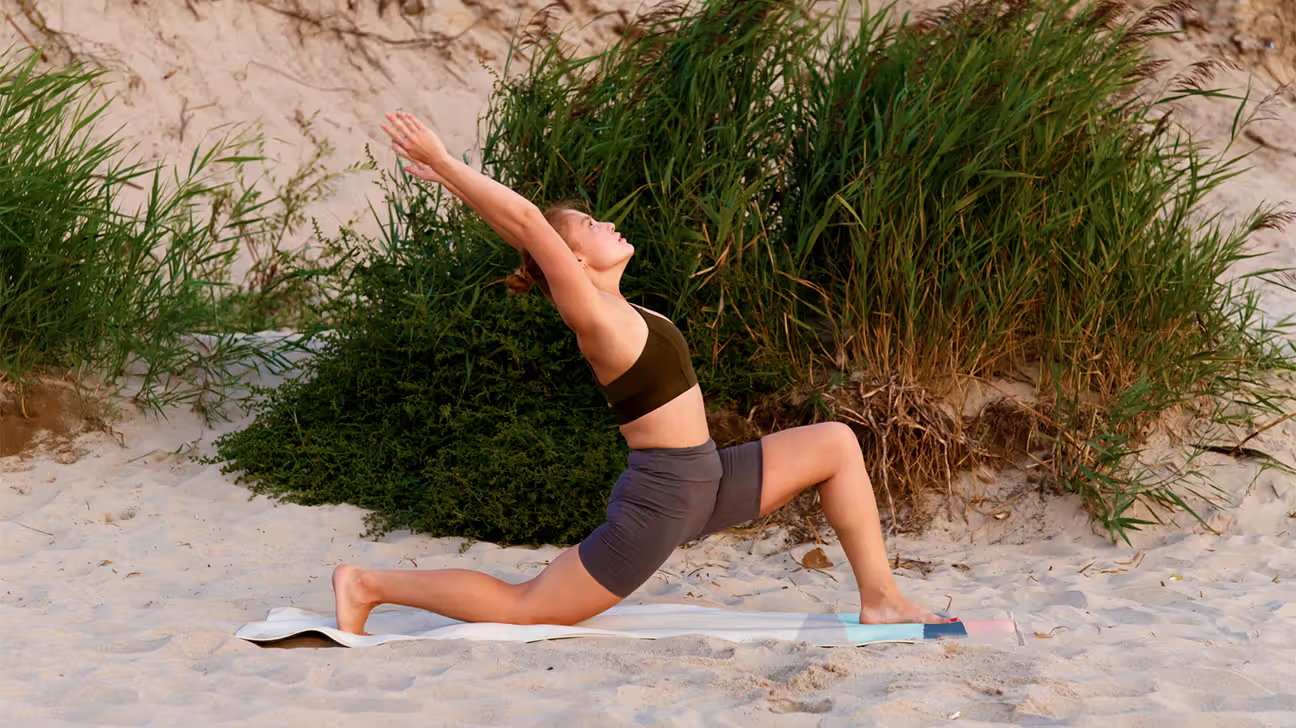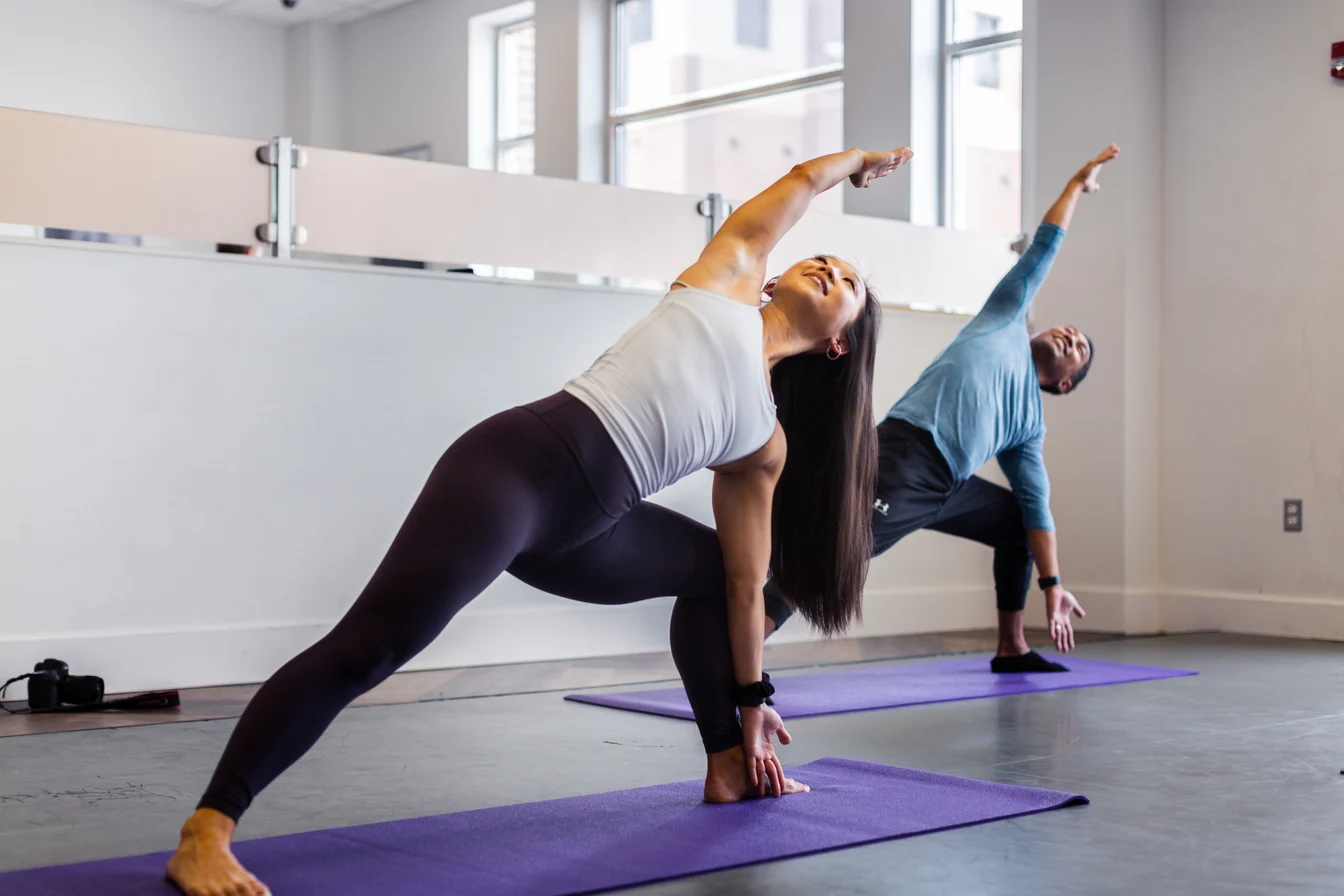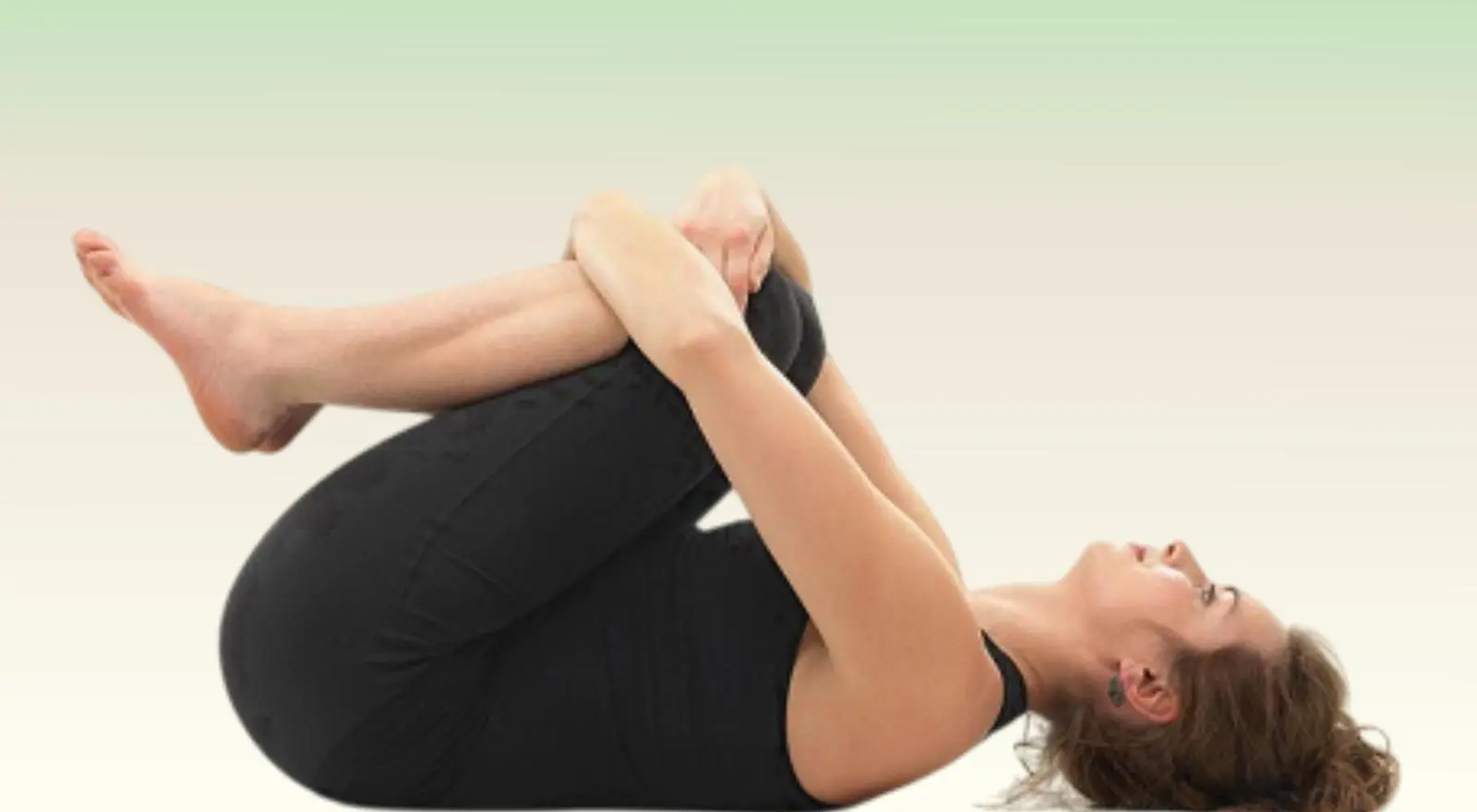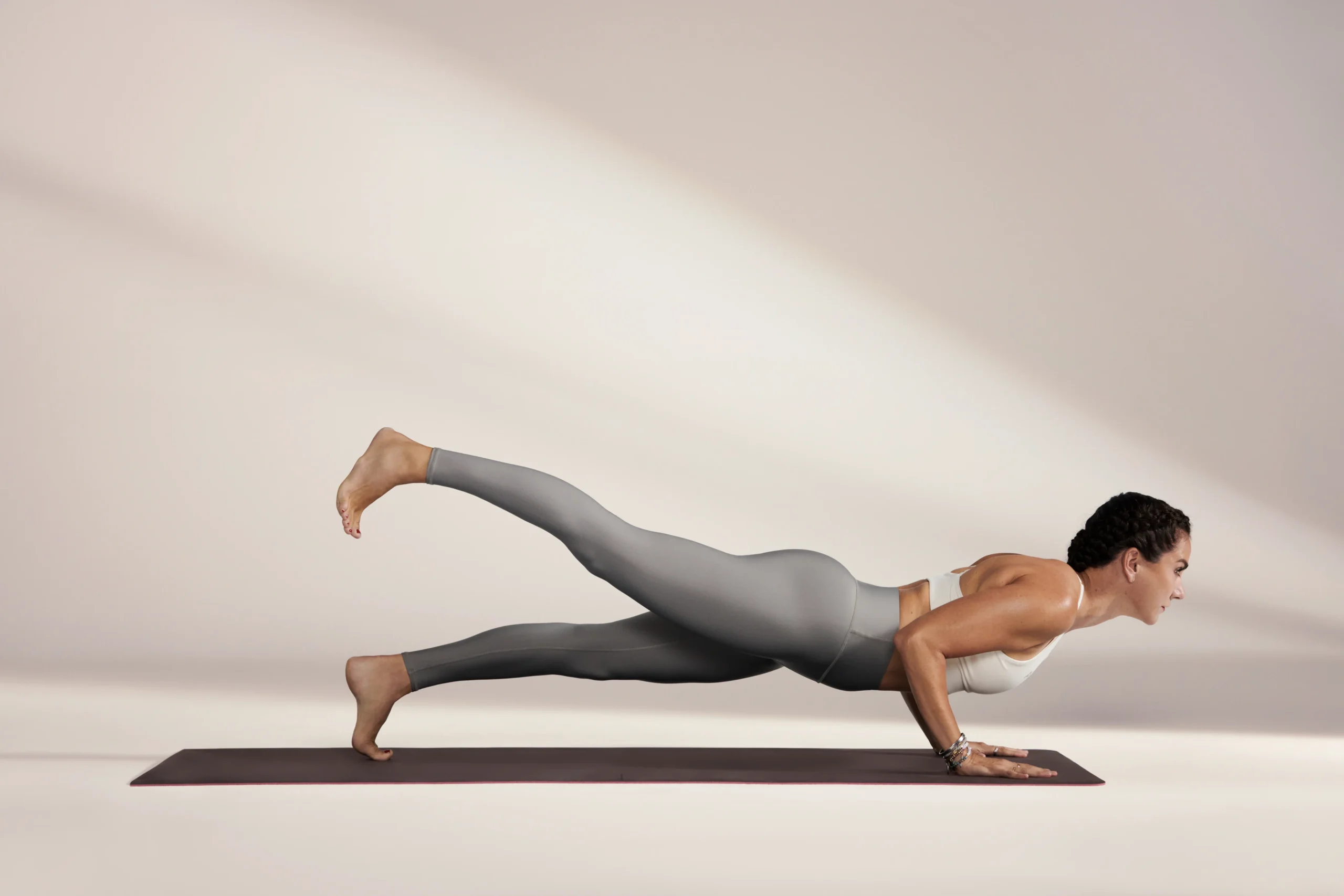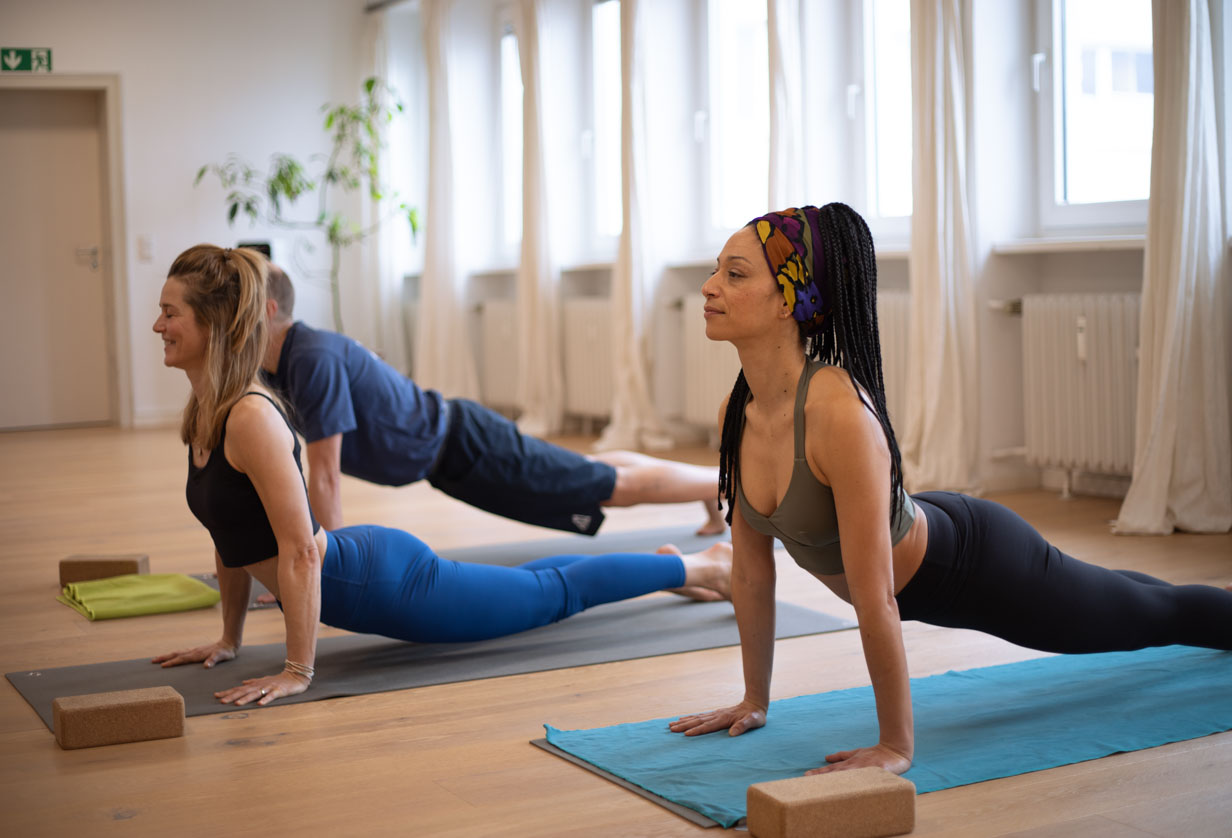Hey there, friend. Picture this: It’s a crisp Saturday morning, and I’m rolling out my mat in my tiny apartment, the kind where the coffee maker and the yoga space compete for floor real estate. I remember my first power yoga class like it was yesterday—sweat dripping, heart pounding, and me thinking, “What have I gotten myself into?” But by the end, I felt alive, like I’d just conquered a mountain without leaving the studio. That rush? That’s power yoga. If you’re curious about this dynamic twist on traditional yoga, you’re in the right spot. Let’s dive in together.
Power yoga isn’t some ancient ritual; it’s a modern mash-up born from the fiery energy of Ashtanga and the fluid grace of Vinyasa. Think of it as yoga’s gym-loving cousin—fast-paced, strength-building, and unapologetically sweaty. Developed in the 1990s by pioneers like Beryl Bender Birch and Bryan Kest, it strips away the rigid sequences of its roots to let instructors craft flows that challenge your body while syncing breath to movement. It’s less about chanting mantras and more about building that inner fire, or tapas, to torch calories and sculpt muscle. No wonder it’s exploded in popularity; a 2021 global survey pegged it as the third-most-practiced style worldwide, right behind Hatha and Vinyasa. If you’ve ever felt stuck in slow stretches, power yoga might just be the spark you need.
What draws me back week after week? It’s that blend of grit and grace. One time, after a brutal workweek, I hit a class feeling like a deflated balloon. Thirty minutes in, flowing through warriors and planks, I was grinning through the burn—proof that this practice isn’t just exercise; it’s a reset button for your whole self.
The Origins of Power Yoga
Power yoga burst onto the scene in the ’90s when Western yogis craved something tougher than the meditative Hatha classes dominating U.S. studios. Drawing from Ashtanga’s precise, breath-linked flows, it ditched the strict order for creative sequences that amp up the cardio. Beryl Bender Birch gets credit for coining the term, adapting Ashtanga for gym-goers who wanted yoga that felt like a workout, not a nap.
This evolution made yoga accessible to athletes and busy folks alike. Studios started heating rooms to 85-95°F, mimicking the internal heat of traditional practices while loosening tight muscles for deeper stretches. Today, it’s everywhere—from CorePower Yoga chains to online platforms—proving yoga can flex with modern life.
I chuckle thinking about my early days; I showed up in baggy sweats, expecting a chill vibe. Instead, I got a full-body wake-up call. That surprise? It’s the beauty of power yoga’s roots—rooted in tradition but remixed for real-world warriors like us.
Benefits of Power Yoga
Power yoga packs a punch for your body and mind, turning a simple stretch session into a full-spectrum tune-up. Physically, it’s a calorie incinerator: A 155-pound person can torch 300-400 calories in an hour, thanks to the non-stop flow that spikes your heart rate like a HIIT class. Mentally, it quiets the chaos—studies show it slashes stress hormones and eases anxiety, leaving you sharper and more resilient.
Beyond the sweat, it builds endurance that spills into daily life. I once powered through a 10K race after months of classes, my legs thanking me for all those lunges. It’s not just fitness; it’s empowerment, one breath at a time.
Physical Benefits
The real magic happens in your muscles and heart. Long holds in poses like plank crank up strength, while quick transitions boost cardio health—lowering blood pressure and improving cholesterol, per research on vigorous flows. Flexibility blooms too, as dynamic stretches target hips, hamstrings, and spine, reducing injury risk.
Ever notice how desk life tightens your shoulders? Power yoga unravels that, enhancing posture and balance. Dancers in one study saw anaerobic endurance jump after eight weeks. It’s like giving your body a tune-up that lasts.
Mental and Emotional Benefits
Don’t sleep on the mind game. Syncing breath to movement floods your brain with feel-good endorphins, combating depression and sharpening focus. For smokers, Vinyasa-style sessions like this cut cravings, aiding quit attempts.
Emotionally, it’s a safe space to process. After a tough breakup, my mat became my therapist—flows helping me release what I couldn’t say out loud. Laughter sneaks in too; nothing humbles you like wobbling in warrior and giggling it off.
Essential Power Yoga Poses for Beginners
Starting out? Keep it simple—these foundational poses build the base for flows. Focus on form over fancy; modifications like knees down in plank make them newbie-proof. Aim for 5-10 breaths per hold to ease in.
Power yoga shines in sequences, but mastering these solo builds confidence. I still flashback to my first downward dog, arms shaking like jelly. Now? It’s my anchor.
Downward-Facing Dog (Adho Mukha Svanasana)
This inverted V-shape is your all-star warm-up, stretching hamstrings while strengthening arms and core. Pedal your heels to deepen the calf release—pure bliss after a long day.
From plank, lift hips high, pressing heels toward the mat. Gaze at your navel to protect your neck. It’s a full-body reset, improving circulation and easing back tension. Beginners, bend knees if needed; flexibility comes with time.
Warrior II (Virabhadrasana II)
Channel your inner gladiator here—front knee bent over ankle, arms extended like you’re drawing a bow. It fires up legs and opens hips, building stamina that carries off the mat.
Stand tall, step one foot back, turn toes out 90 degrees. Sink into the front heel, gaze over your front hand. This pose boosts balance and leg power, perfect for hikers or runners. Feel the burn? That’s progress whispering.
Plank Pose (Phalakasana)
Core central: Forearms or hands under shoulders, body a straight line from head to heels. Hold steady, breathing deep—it’s the sneaky strength-builder in every flow.
Engage your abs like you’re bracing for a punch. Drop to knees for support if quads scream. Planks torch calories and stabilize your spine, warding off desk hunch. I use it as a quick mood-lifter; nothing says “I got this” like a solid hold.
Chair Pose (Utkatasana)
Squat like you’re sitting back into an invisible throne—knees bent, arms sky-high. It sculpts thighs and glutes while firing up your heart.
Feet hip-width, sink hips low, weight in heels. Reach arms forward or overhead. This powerhouse tones lower body and builds willpower; hold longer each time. My go-to for leg day dread—funny how it turns “ugh” into “yes.”
Building a Power Yoga Practice at Home
Home practice? It’s intimate and flexible, like chatting with an old friend. Start with 20 minutes, three times a week—consistency beats intensity. Clear space, cue upbeat tunes, and roll with what feels good.
The beauty is in the adaptability; no commute means more flows. During lockdown, my living room mat saved my sanity—one warrior at a time. Pro tip: End with savasana; it’s the hug you didn’t know you needed.
Sample Beginner Sequence
- Warm-Up (5 mins): Cat-Cow flows on all fours, syncing breath to arch and round your spine.
- Flow (10 mins): Sun Salutations A—mountain to forward fold, plank to cobra, up dog to down dog. Repeat 3-5 rounds.
- Strength (5 mins): Alternate Warrior I and II, 30 seconds each side.
- Cool-Down (5 mins): Seated forward fold into child’s pose.
This 25-minute circuit builds heat without overwhelm. Track progress in a journal—what loosened today? It’s your story unfolding.
Tips for Safe Practice
Listen to your body; pain’s a no-go, discomfort’s the teacher. Hydrate pre-class, especially if heated—dehydration sneaks up fast. Use props like blocks for support; they’re not cheats, they’re enablers.
Breathe ujjayi-style: Ocean-like inhales and exhales keep you grounded. I once pushed too hard and tweaked my hamstring—lesson learned: Grace over grit wins every time.
Where to Find Power Yoga Classes
Ready to level up? Studios offer that electric vibe, but online gems make it accessible anywhere. Check local spots via Yoga Alliance for certified teachers—safety first.
Navigational nudge: Apps like Glo or Down Dog let you filter by style. My fave? Community energy that turns strangers into sweat-squad mates.
Best Online Platforms
| Platform | Why It’s Great | Price | Standout Feature |
|---|---|---|---|
| PowerYoga.com | Bryan Kest’s flows feel personal and empowering. | $18/month | Free trial classes for all levels. |
| CorePower On Demand | Heated-style intensity from pros. | $10/month | 2,000+ classes, including sculpt hybrids. |
| Peloton App | Live energy with power flows. | $13/month | Music-driven sessions for motivation. |
| DoYogaWithMe | Free library, no fluff. | Free/Paid | Beginner power sequences galore. |
| Alo Moves | Celeb instructors, polished production. | $99/year | Themed challenges for variety. |
These picks blend affordability and quality—start free where you can. I rotate between PowerYoga.com for depth and Peloton for fun; keeps things fresh.
Power Yoga vs. Other Styles: A Quick Comparison
Power yoga’s not alone in the flow family—here’s how it stacks up. Vinyasa’s breath-led cousin is fluid but less gym-rat intense; Hatha slows it down for alignment focus.
| Style | Pace | Focus | Best For | Calorie Burn (per 60 mins, 155 lbs) |
|---|---|---|---|---|
| Power Yoga | Fast, athletic | Strength + cardio | Building muscle, endurance | 350-450 |
| Vinyasa Yoga | Moderate flow | Breath-movement sync | Flexibility, mindfulness | 300-400 |
| Hatha Yoga | Slow, deliberate | Poses + relaxation | Beginners, stress relief | 200-300 |
| Ashtanga Yoga | Rigorous, fixed sequence | Discipline, heat-building | Advanced practitioners | 400-500 |
Power edges out for fat-burn thanks to longer holds and quicker transitions—it’s Vinyasa on steroids. Pick based on your vibe; I mix power with restorative for balance.
Pros and Cons of Power Yoga
Like any practice, it’s got highs and lows. Pros: Total-body transformation, from toned arms to zen mind. It’s addictive—that post-class glow? Priceless.
- Pros:
- Boosts metabolism and heart health.
- Enhances mental clarity and mood.
- Scalable for all levels with mods.
Cons: Intensity can intimidate newbies or flare old injuries. Heated rooms amp dehydration risk—stay smart.
- Cons:
- Demands baseline fitness; not for absolute zero-movement starts.
- Potential for overexertion if ego leads.
- Class variability means inconsistent experiences.
Weigh ’em: For me, the empowerment outweighs the sweat stains. Start slow, and it’ll click.
People Also Ask (PAA)
Ever Googled power yoga and spiraled into questions? Here’s the scoop on real searches.
Is power yoga good for beginners?
Absolutely, with a gentle entry. Opt for intro classes focusing on basics—builds confidence without overwhelm. Skip advanced flows till you’re comfy; modifications keep it safe.
What’s the difference between yoga and power yoga?
Traditional yoga (like Hatha) emphasizes slow poses and meditation for inner peace. Power yoga revs it up with cardio flows for strength and sweat—less “om” and more “let’s go.”
Can power yoga help you lose weight?
Yes—its high-intensity flows burn serious calories while building muscle to rev your resting metabolism. Pair with mindful eating for best results; one study saw participants drop pounds steadily.
How often should you do power yoga?
Three to five sessions weekly hits the sweet spot for gains without burnout. Listen to your body—rest days prevent injury. I aim for four; it’s my non-negotiable joy.
FAQ
Got lingering doubts? These cover common curiosities from fellow yogis.
Do I need prior yoga experience for power yoga?
Not really—beginner classes teach the ropes. If you’ve stretched before, great; otherwise, start with online intros. Experience helps with flow, but enthusiasm trumps all.
Is power yoga suitable during pregnancy?
With doc approval, yes—modified flows support strength without strain. Avoid deep twists or inversions; focus on gentle builds. Many mamas swear by it for labor prep.
How does power yoga differ from hot yoga?
Hot yoga’s any style in a steamy room (often Bikram’s fixed sequence). Power yoga’s vigorous flow, heated or not—think dynamic vs. structured sweat.
Can power yoga help with back pain?
Often, yes—the core work stabilizes your spine, easing chronic aches. A review found it rivals PT for relief, but consult a pro if pain’s sharp.
What’s the best gear for power yoga?
Grippy mat, moisture-wicking clothes, and a towel for slips. Blocks and straps aid beginners. I swear by my trusty Manduka—invest once, flow forever.
There you have it—the full scoop on power yoga, from my mat to yours. It’s more than poses; it’s a path to feeling unstoppable. Grab that mat, take a deep breath, and flow into your first class. Who’s with me? What’s holding you back? Drop a thought below—I’d love to hear your story. Namaste, and let’s power on.
